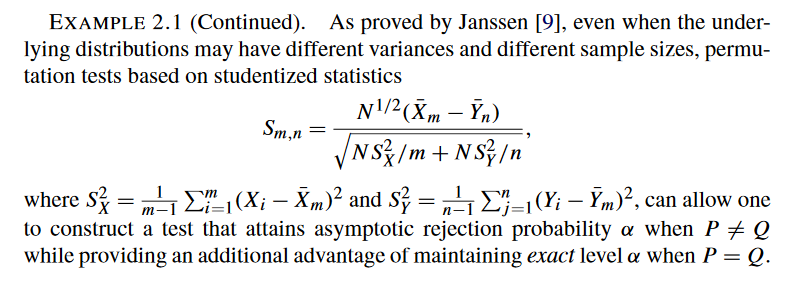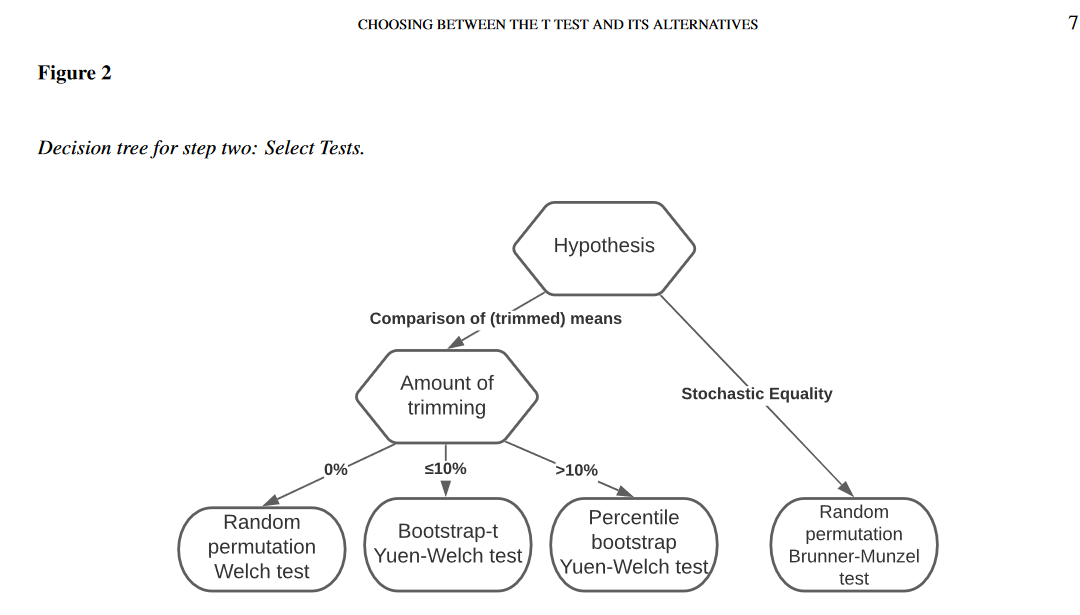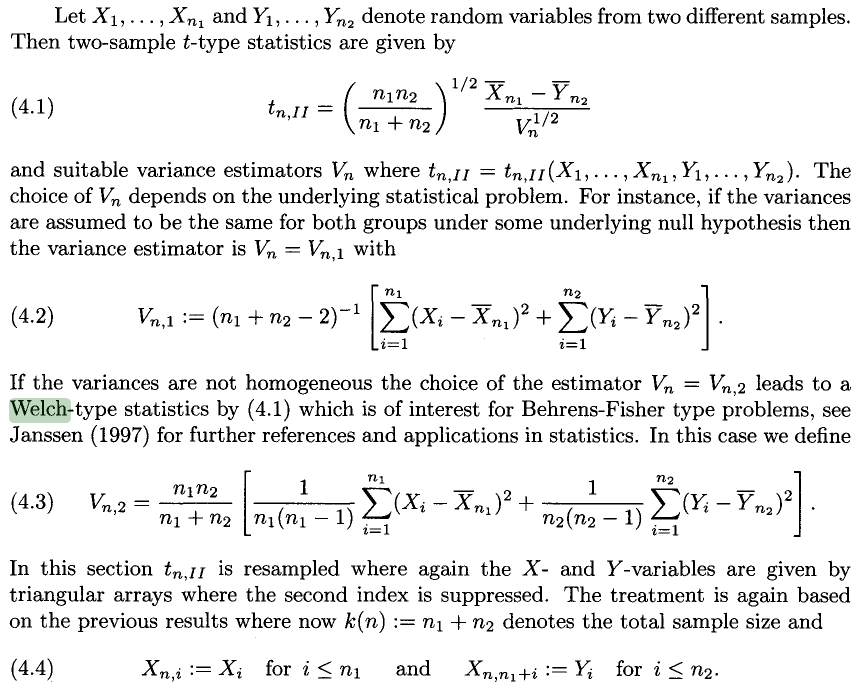You may be also interested in these papers:
- https://projecteuclid.org/journals/annals-of-statistics/volume-41/issue-2/Exact-and-asymptotically-robust-permutation-tests/10.1214/13-AOS1090.full
(free access)
page 8/24
 linking to
linking to
JANSSEN , A. (1997). Studentized permutation tests for non-i.i.d.
hypotheses and the general- ized Behrens–Fisher problem. Statist.
Probab. Lett. 36 9–21. MR1491070
https://www.sciencedirect.com/science/article/abs/pii/S0167715297000436
saying that:
It is shown that permutation tests based on studentized statistics are
asymptotically exact of size α also under certain extended non-i.i.d.
null hypotheses. To demonstrate the principle the results are applied
to the generalized two-sample Behrens-Fisher problem for testing
equality of the means under general non-parametric heterogeneous error
distributions. Within this setting we propose a permutation version of
the Welch test which is an extension of Pitman's two-sample
permutation test. These results are special cases of a conditional
central limit theorem for studentized permutation statistics which
also applies to asymptotic power functions.
- https://link.springer.com/article/10.3758/s13428-021-01595-5
(free access)
Noguchi, K., Konietschke, F., Marmolejo-Ramos, F. et al. Permutation
tests are robust and powerful at 0.5% and 5% significance levels.
Behav Res 53, 2712–2724 (2021).
https://doi.org/10.3758/s13428-021-01595-5
Abstract:
Recent replication crisis has led to a number of ad hoc suggestions to
decrease the chance of making false positive findings. Among them,
Johnson (Proceedings of the National Academy of Sciences, 110,
19313–19317, 2013) and Benjamin et al. (Nature Human Behaviour, 2,
6–10 2018) recommend using the significance level of α = 0.005 (0.5%)
as opposed to the conventional 0.05 (5%) level. Even though their
suggestion is easy to implement, it is unclear whether or not the
commonly used statistical tests are robust and/or powerful at such a
small significance level. Therefore, the main aim of our study is to
investigate the robustness and power curve behaviors of independent
(unpaired) two-sample tests for metric and ordinal data at nominal
significance levels of α = 0.005 and α = 0.05. Through an extensive
simulation study, it is found that the permutation versions of the
Welch t-test and the Brunner-Munzel test are particularly robust and
powerful while the commonly used two-sample tests which utilize
t-distribution tend to be either liberal or conservative, and have
peculiar power curve behaviors under skewed distributions with
variance heterogeneity.
- https://files.osf.io/v1/resources/ye2d4/providers/osfstorage/60dee6c3f83de20290afec7b?action=download&direct&version=2
for PDF
or
online viewer: https://osf.io/preprints/psyarxiv/ye2d4
(free full text)
Karch, J. D. (2021). Choosing between the two-sample t test and its alternatives: a practical guideline.. https://doi.org/10.31234/osf.io/ye2d4
It discusses making decisions about appropriate test use. Too wide to paste everything in the guideline. I'm citing it to show the permutation Welch test is actually used and cited.

- https://www.researchgate.net/publication/24052826_Resampling_Student%27s_t-type_statistics
(free access)
Janssen, Arnold. (2005). Resampling Student's t-type statistics. Annals of the Institute of Statistical Mathematics. 57. 507-529. 10.1007/BF02509237.
The present paper establishes conditional and unconditional central
limit theorems for various resampling procedures for the t-statistic.
The results work under fairly general conditions and the underlying
random variables need not to be independent. Specific examples are
then the m(n) (double) bootstrap out of k(n) observations, the
Bayesian bootstrap and two-sample t-type permutation statistics. In
case when m(n)/k(n) is bounded away from zero and infinity necessary
and sufficient conditions for the conditional central limit law of the
bootstrap t-statistics are established. For high resampling intensity
when m(n)/k(n) tends to infinity the following general result is
obtained. Without further other assumptions the bootstrap makes the
resampled t-statistic automatically normal. The results are based on a
general conditional limit theorem for weighted resampling statistics
which is of own interest.

- http://129.217.131.68:8080/bitstream/2003/40978/1/Diss.pdf
Lubna Amro, Resampling-Based Inference Methods for Repeated Measures Data with Missing Values, Dissertation in partial fulfillment of the requirements for the degree of Doktor der Naturwissenschaften
submitted to the Department of Statistics TU Dortmund University, 2022
It discusses various aspects of resampling tests. I cite it to show that the permutation Welch t test is discussed also in the recent academic work:






springerlink.com. But, it seems that your two examples (in the last sentence) both point to the same paper. Perhaps you could take a look, whenever possible… $\endgroup$